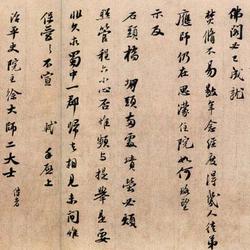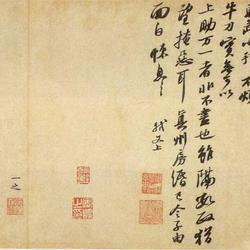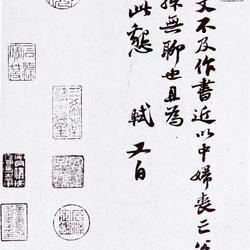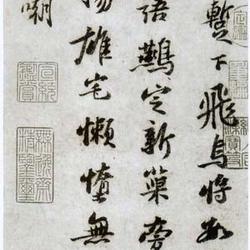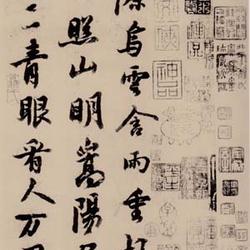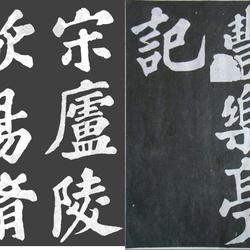
Su Shi's "Cursive Script Reply to the Civil Teachers" paper, 27 cm in length and 96.5 cm in width, collected by the Shanghai Museum. This volume is a letter Su Shi wrote to his friend Xie Minshi in the winter of December of the third year of Yuanfu (1100), discussing his views on the use of words to convey ideas in literature. The existing ink mark has lost the first part of the article.
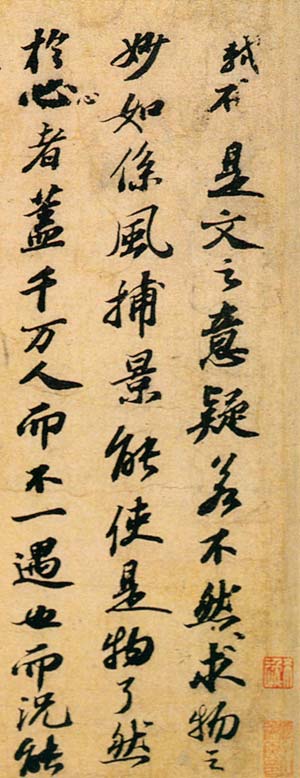
Appendix: Original book description
In ancient times, rulers and tablets were used to express parting feelings, inquire about the well-being of family members, talk about life with colleagues, or discuss literature and art with friends. What they said was deeply affectionate, and they were applied to rulers, regardless of their craftsmanship. And when he was swaying it casually, his true meaning was revealed. If this ruler slip came from the hands of a famous calligrapher, it would be even more precious, so people in the world treasured it, and every time they got a ruler slip from a famous calligrapher, they would treat it like a jade. This trend continues to this day. , but unfortunately with the reform of writing tools, the circulation of information and the invention of computers, the cultural phenomenon of using brushes to write rulers and tablets is gradually fading away. As a kind of historical and cultural accumulation and special writing format, rulers and tablets of famous people in the past dynasties are not only favored by calligraphers. It is also favored by collectors and appreciators. Su Shi's "Articles of Appreciation to Civil Teachers" is a frame of rulers with high cultural relic, collection, academic and artistic value.
Su Shi (1036-1101), courtesy name Zizhan, also known as Dongpo Jushi, was a native of Meishan, Sichuan. He was not only a famous writer in the Northern Song Dynasty, but also a famous calligrapher. His poems, essays, Ci, Fu, calligraphy, Buddhism and painting were all outstanding. When he was ten years old, his father Su Xun traveled far and wide to study, and his mother Cheng personally taught him books. In the second year of Jiayou's reign, he took an examination of the Ministry of Etiquette. Ouyang Xiu was amazed by his literary talent and sighed:
"I should avoid this person and go out of my way." In Xining, Wang Anshi carried out reforms, and Shi wrote a letter to discuss the inconvenience. Anshi was angry, so he was ostracized, demoted to Hangzhou Tongpan, and moved to Huzhou again. In the second year of Yuanfeng, he was appointed as the deputy training envoy of Huangzhou. Yuanyou Zhonglei was an official Hanlin bachelor, and he was known to Hangzhou as a bachelor of Longtuge. Shaoshengzhonglei was demoted to Qiongzhou and died in Changzhou at the age of sixty-six. .
Su Shi studied "Lanting" in his early years. In his middle age, he liked Lu Gong, Yang Ningshi, and Li Yong. In his later years, he integrated it and became his own family. Huang Shangu commented on his book: "The pen is round and the rhyme is winning, and the articles are used to enlighten the world. Loyalty runs through the sun and the moon. The Qi of this dynasty's good books should be ranked first." It is said that Dongpo made good use of single-hook and horizontal pens when writing books, and used sideways postures to capture beauty. Therefore, his calligraphy is plump and vigorous, and his writing power is round and strong. , extremely mellow, and its structure is tilted to one side, extending to the left and contracting to the right, so its movement of Qi is extremely smooth. The layout of his writings is uneven, large and small, strange and dense, and perfectly harmonious with nature. Especially his rulers and tablets, which can be picked up at your fingertips and follow the trend, like the wind blowing on the water or the clouds coming out of the rocks. There is a sense of writing and gloomy atmosphere. The vitality emerges between the words and ink, which is very thought-provoking. The "Su Shi's Reply to the Civil Teachers" contained in this volume was written by Su Shi in the third year of Yuanfu (1100) in the Northern Song Dynasty, that is, one year before his death, he was pardoned from Danzhou (Hainan Island) and passed by Xiashan Temple in Qingyuan, Guangdong when he was heading north. At that time, he wrote a letter to his friend Xie Minshi. The content was to reply to Xie Minshi's questions about writing and express some of his opinions on article writing. This article is compared with the original text contained in "Jing Jin Dongpo Yuan Ji Shi Lu" written by Lang Hua of the Southern Song Dynasty. The first paragraph has a total of 148 lost characters. The first part of the post is "Shi Qi is the meaning of the article is doubtful". It is not in the original text, and it is not found in the collected works at the end of the post, "Shi bowed his head and paid homage to the civil division's account, on November 5, His Excellency Tuiguan." The postscript at the end of the post contains a paragraph added by Lou Jian, a famous calligrapher in the Ming Dynasty, imitating Su Shi's calligraphy. Que Wen also has postscripts written by Chen Jiru and others. This post is on paper, 27 centimeters long and 96.5 centimeters wide. It is now in the Shanghai Museum. Reading this post carefully, the book and the text complement each other, and the whole article is focused and unstoppable. Yu He once commented on his book: "Mr. Dongpo was the best among all the officials at that time. Every time I saw a piece of paper in someone else's house, I would not hesitate to appreciate it. When I found his relics, I could still imagine his demeanor and his exquisite writing and ink." Wonderful." Just as Lou Jian said in the postscript at the end of the volume: "Po Gong's book is rich in flesh but strong in bones, thick in form but light in meaning, hiding cleverness in clumsiness, and is particularly pure and ancient." Undoubtedly, this piece of ruler-slip paper should be regarded as a masterpiece from Su Shi's life. It is now published as a color photo of the original work for the benefit of calligraphy enthusiasts.

